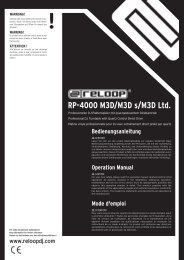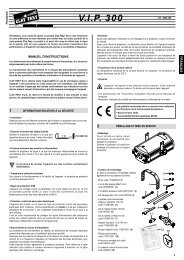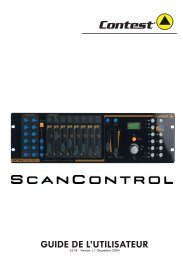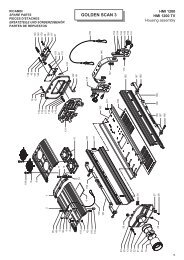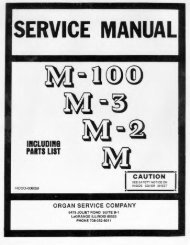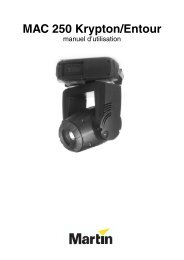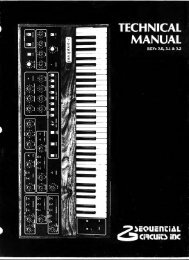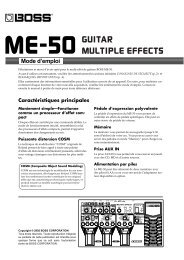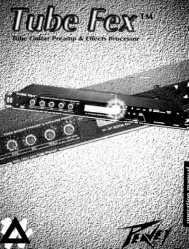You also want an ePaper? Increase the reach of your titles
YUMPU automatically turns print PDFs into web optimized ePapers that Google loves.
300 V 3.0 <strong>Owner's</strong> <strong>Manual</strong>Single SetupAlgorithmsRandom HallGeneral Description<strong>Lexicon</strong>The 300 incorporates the results of a great deal of research into acoustics andreverberation. Reverberation, or reflected sound energy, gives recorded musica sense of being performed in a real acoustic location.In the 300, the SIZE, SPREAD and SHAPE controls allow adjustment of thebuildup and decay of the initial part of the reverberation envelope. SHAPEcontrols the shape of the envelope, while SPREAD and SIZE set the time overwhich this shape is active.In the Random Hall program, SIZE acts as a master control for the apparent sizeof the space being created by the 300. Both SPREAD and RTIM vary linearlywith the setting of SIZE. Thus maximum reverb time and spread require highsettings of SIZE. To find an appropriate reverb sound, start with a preset with asimilar sound to what you want to end up with. Simply varying SIZE is oftensufficient to arrive at the exact sound you are seeking.Once a size has been selected, SPREAD and SHAPE are used to adjust theshape and duration of the initial reverb envelope, which together provide themajor sonic impression of room size.When SHAPE is at minimum, the reverberation envelope builds up very quicklyto a maximum amplitude, and then dies away quickly at a smooth rate. Thisenvelope is characteristic of small reverberation chambers and reverberationplates. There are few (if any) size cues in this envelope, so it is ineffective increating ambience. With this SHAPE setting, SPREAD has no effect. Thedensity is set by the size control, and the rate of decay is set by RTIM. Thisreverberation envelope is typical of many of the popular digital reverberators ofthe last few years.As SHAPE is raised to about 1/8 of its range, the initial sharp attack of thereverberation is reduced, and reverberation builds more slowly. The envelopethen sustains briefly before it begins to die away at the rate set by RTIM.SPREAD has little or no effect on this shape.When SHAPE is at 1/4 of its range, buildup is even slower and the sustain islonger. Now SPREAD affects the length of both the buildup and the sustain. Asa rough estimate, the sustain will be approximately the time value indicated bythe SPREAD display (in milliseconds).As SHAPE is raised further, the buildup and sustain remain similar, but now asecondary sustain appears in the envelope, at a lower level than the first. Thissecondary plateau simulates a very diffused reflection off the back wall of a hall,and is effective in creating a sense of size and space. This reflection becomesstronger and stronger, reaching an optimal loudness when SHAPE is at about1/2 of its range.The highest SHAPE settings are typically used for effects. Near the top of thescale the back wall reflection becomes stronger than the earlier part of theenvelope, resulting in an inverse sound.4-2





